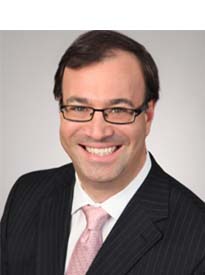Alberta’s newly introduced personal tax regime for high-income earners means that the province will no longer have the lowest marginal tax rate in Canada. Higher-income Canadians living outside Alberta have always envied that province’s 10% flat tax rate, which, when combined with the top federal tax rate of 29%, produced a combined maximum personal tax rate of 39%, which was by far the lowest in Canada. In fact, this tax rate was a full 11 percentage points lower than the top marginal rate of 50% in place in Ontario, Quebec and Nova Scotia and 16 percentage points below New Brunswick’s eye-popping new tax rate of 55% for its highest-income earners.
However, Alberta’s new NDP government passed Bill 2: An Act to Restore Fairness to Public Revenue, which received Royal Assent on June 29, merely eleven days after it was first introduced. As promised in its throne speech, the government has introduced progressive, graduated tax rates for Albertans whose taxable income exceeds $125,000.
Specifically, those with incomes of more than $125,000 but less than $150,000 will pay 12% in provincial taxes; those making more than $150,000 but less than $200,000 will pay 13%; those making more than $200,000 but less than $300,000 will pay 14%; and those earning more than $300,000 will pay 15%, resulting in a new, top combined federal Alberta marginal rate of 44%. These brackets will be indexed to inflation starting in 2017.
Alberta’s increases apply as of Oct. 1, which effectively means that for 2015, the rates above are prorated by 25% (representing three months), resulting in 2015 effective tax rates of 10.5%, 10.75%, 11% and 11.25%, respectively, for the groups mentioned above. Starting in 2016, the full new rates will apply. That means Alberta’s top marginal rate of 44% on ordinary income for 2016 will be the same as in Saskatchewan and the Yukon, higher than in British Columbia, the Northwest Territories and Nunavut, but still lower than in the other provinces.
What’s most interesting is at what income levels the top rate actually applies. In other words, whether your client is a “high-income earner” and subject to top marginal rate taxation now depends, more than ever, on the province in which he or she lives.
Federally, the top tax rate of 29% rate kicks in once taxable income is above $138,586 (for 2015), but provincially, the top rate income threshold is all over the map. The Yukon’s top rate kicks in at $500,000; then comes Alberta, at $300,000; and New Brunswick is in third place with $250,000. Ontario follows closely with its top rate kicking in at income above $220,000, with Newfoundland and Labrador at $175,000 and the rest of the provinces at about $150,000 or slightly less.
So, when it comes to earning investment income for high-income earners, capital gains, which are taxed at 50% of the rate applicable to ordinary income, will now be preferred over Canadian eligible dividends, which typically come from shares of Canadian publicly traded companies or Canadian dividend funds. This is true for top income earners in all provinces and territories, other than the highest bracket earners in the Yukon.
